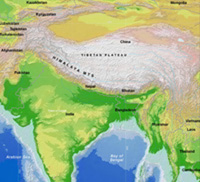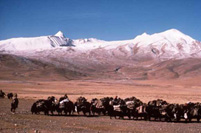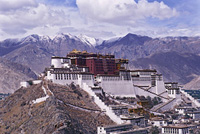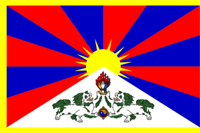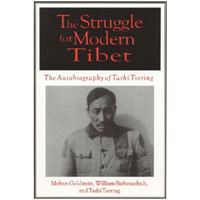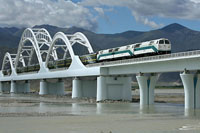
Jochen Welsch
Wachusett Regional High School
Tibet in the AP World History Framework
One of the most important developments in the period from 1450-1750 was the linking of the western hemisphere to the eastern hemisphere. This is where traditional history classes often begin to increasingly focus on the emergence of Europe or Western civilization and begin to explore the rest of the world through the prism of Europe's contact with Asian, African and "New World" civilizations. The growth of the Ming, Ottoman, Russian, Timurid and Mogul, Inca and Aztec empires along with those of Spain and other European powers negate the overly simplistic portrayal of this period as one of European dominance. At the same time it is important to view the changes that resulted from to the incorporation of the Americas into the previous trade networks. What did this mean for landlocked regions like Central Asia?
Politically Tibet's situation during this period has many parallels to that of other regions. Religion and politics became particularly entwined resulting in conflicts over temporal and spiritual power. The chaos created by these struggles combined with issues over succession often attracted the attention of outside forces looking to enhance their own power and prestige.
Click on the title Tibet in the First Global Age to access my powerpoint on Tibet's history from 1450-1750.
Resources for further research and classroom extension activities:
Architecture project:
This period witnessed the building over many impressive monuments to power. Among these are Tibet Potala Palace, China's Forbidden City, France's Versailles, Istanbul's Suleimanye Mosque and royal palaces, Russia's Kremlin, Peru's Machu Pichu, Tamerlane's tomb in Samarkand and many others. Have students make postcards of these monuments. On the back the need to explain how each monument explains it age. Why was it built? How is it a snapshot of its age.
Writing prompt: The Tibetan Plateau and South America's Altiplano are among the most inhospitable places to for human habitation yet each was the site of incredible civilizations. How are the cultural practices of the people who inhabited these regions in 1450 -1750 similar? How are they different? How about the political systems they devised? Their religions? In what ways were their fates during this time period similar? In what ways were they different?
 This site was created by Jochen Welsch at the NEH Summer Institute "Literatures, Religions, and Arts of the Himalayan Region," held at the College of the Holy Cross, Summer 2008.
This site was created by Jochen Welsch at the NEH Summer Institute "Literatures, Religions, and Arts of the Himalayan Region," held at the College of the Holy Cross, Summer 2008.